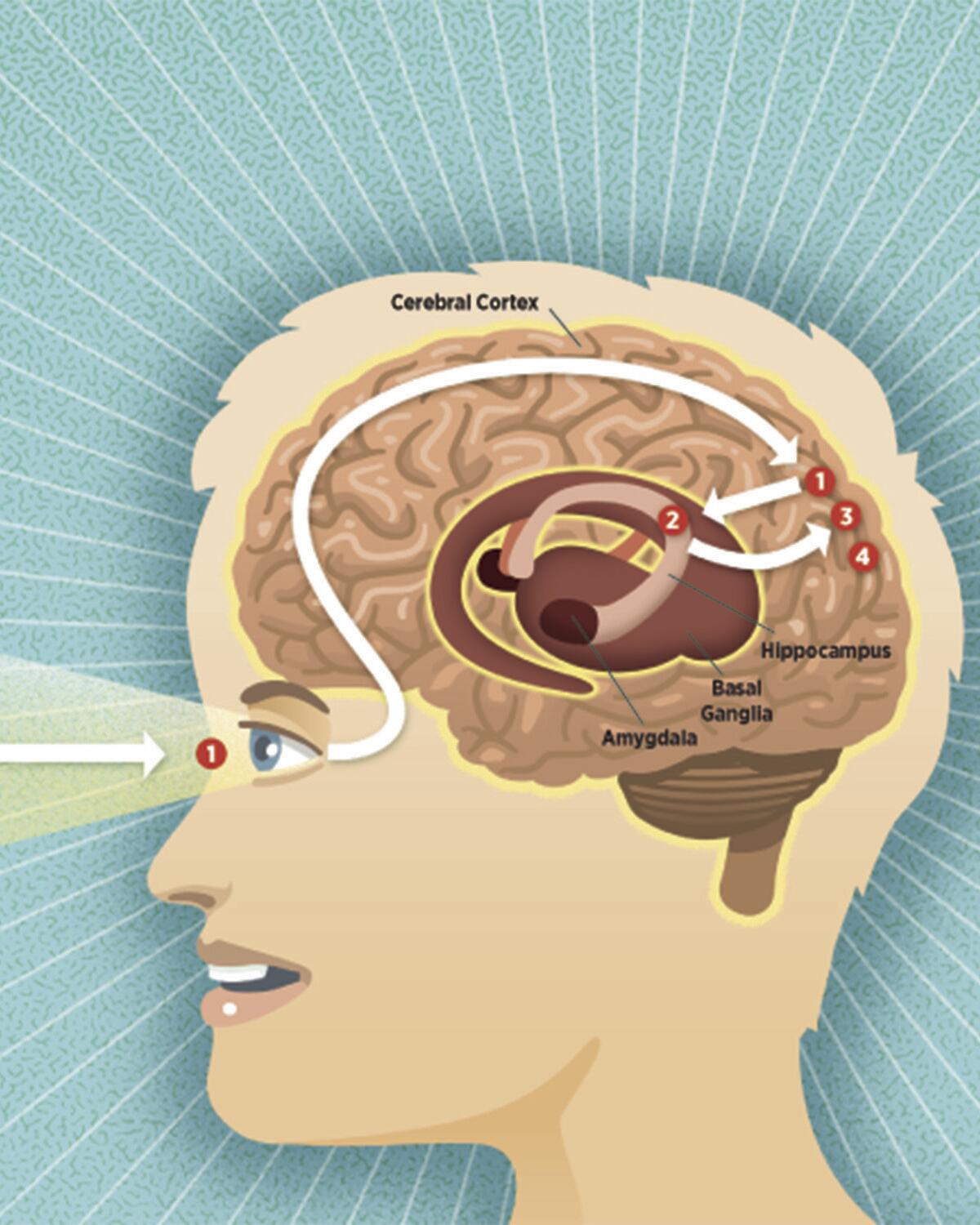How our memories are made in the brain
Our brains make memories of many kinds — how to walk and jump, facts and figures, our fears, the events in our lives.
Nanthia Suthana of the UCLA Brain Research Institute studies the way we remember events. As depicted here, she explains what scientists believe happens when a person remembers her 21st birthday party.

1. Sensory input
Images, sounds, smells and other stimuli from the party are translated into electrical signals and channeled to different parts of the cerebral cortex.
2. Encoding the memory
The cerebral cortex then channels the signals to another part of the brain that will form, or encode, the memory. For an event like a birthday party, the signals go to the hippocampus.
3. Storing the memory
The hippocampus sends the encoded signal back to the various parts of the cerebral cortex that manage sight, sound and so on. There, brain cells called neurons form new connections to place the memories in long-term storage.
4. Retrieving the memory
Later, when she recalls her 21st birthday, neurons in the cerebral cortex reassemble the components of the memory.
Other kinds of memories
The hippocampus encodes memories of facts and events. Procedural memory, the kind you use when you ride a bike, is encoded in the basal ganglia. Emotional memory, which is implicated in PTSD, is encoded in the amygdala.




